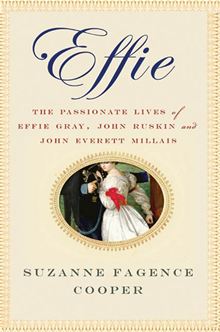 Speculation about the private lives of historic figures is always a dicey thing. The task is made more difficult depending on how long ago the individual lived, how well known they were in the first place, whether they or their acquaintances wrote about them, whether there is an epistolary trail of letters to and from others that have not been destroyed or lost, etc. Furthermore, the more intimate the aspect of the life under investigation, the more likely it is that there is little evidence to lead to reliable conclusions. Hence, when it comes to sexual practices, preferences, and prejudices, conclusions are often highly speculative.
Speculation about the private lives of historic figures is always a dicey thing. The task is made more difficult depending on how long ago the individual lived, how well known they were in the first place, whether they or their acquaintances wrote about them, whether there is an epistolary trail of letters to and from others that have not been destroyed or lost, etc. Furthermore, the more intimate the aspect of the life under investigation, the more likely it is that there is little evidence to lead to reliable conclusions. Hence, when it comes to sexual practices, preferences, and prejudices, conclusions are often highly speculative.
(How different our present personal historical records are with their endless streams of Facebook revelations and confessions, YouTube postings, uninvited tagging, cell phone and email hackings, endless streams of digital photographs and videos.)
Which brings us to the intriguing case of John Ruskin, a botched honeymoon, and the unconsummated marriage.
John Ruskin (1819-1900) was perhaps the preeminent English art critic and social commentator of the 19th Century. His collected writings run to 26 volumes of well over 400 pages each, and there have been numerous biographies, dissertations, and scholarly treatises about him and his work covering at least five shelves of even a modest college library. His diaries, letters and journals have also been published. It seems he believed that every thought that crossed his mind was worth preserving and scholars seem to think it’s all worth reading.
The most intriguing personal detail centers on his relationship with his wife. At the age of 29 Ruskin married Effie Gray, a woman 9 years his junior. According to letters and documents separately written by both of them they did not consummate the marriage on their honeymoon. And, by the time Effie sued for an annulment six years later, they still hadn’t.
In a letter to her father following her separation from Ruskin, Effie explained what went wrong, “Finally this last year he told me his true reason, . . . that he had imagined women were quite different to what he saw I was, and that the reason he did not make me his Wife is that he was disgusted with my person the first evening.” But the question remains, exactly what was it about Effie’s body that repulsed her new husband? Biographers have speculated that her pubic hair turned him off because his notion of female beauty was formed by the hairless bodies of classical statuary and paintings; or perhaps she had a strong body odor.
Now that the mention of menstruation has become increasingly acceptable in all realms of society, it is thought that Effie’s period may have been the culprit. This is the line taken in a new book titled, Effie: The Passionate Lives of Effie Gray, John Ruskin and John Everett Millais by Suzanne Fagence Cooper. Of course, we will never know for sure what John Ruskin’s real hang-ups were. However, the fact that male menstrual ignorance was so thorough at the time makes it reasonable to suggest menstruphobia as a likely explanation for his lost libido. Furthermore, the fact that scholars entertain and write about the possibility and that the detail is included in a male-authored review of the scholarship in The New York Times constitutes yet another sign of shifts in the menstrual ecology. (For a full review of Effie in The New York Times, see Charles McGrath, “Victorian goddess, a Real Wife and a Sour Marriage,” June 22, 2011, pg. C-4.)
To make matters even more interesting, there is currently in production a new film titled “Effie” co-authored by Emma Thomson and her husband Greg Wise, with Dakota Fanning cast in the role of the frustrated Mrs. Ruskin. It will be fascinating to see if menstruation plays a role in the plight of the relationship. Stay tuned for future developments.

